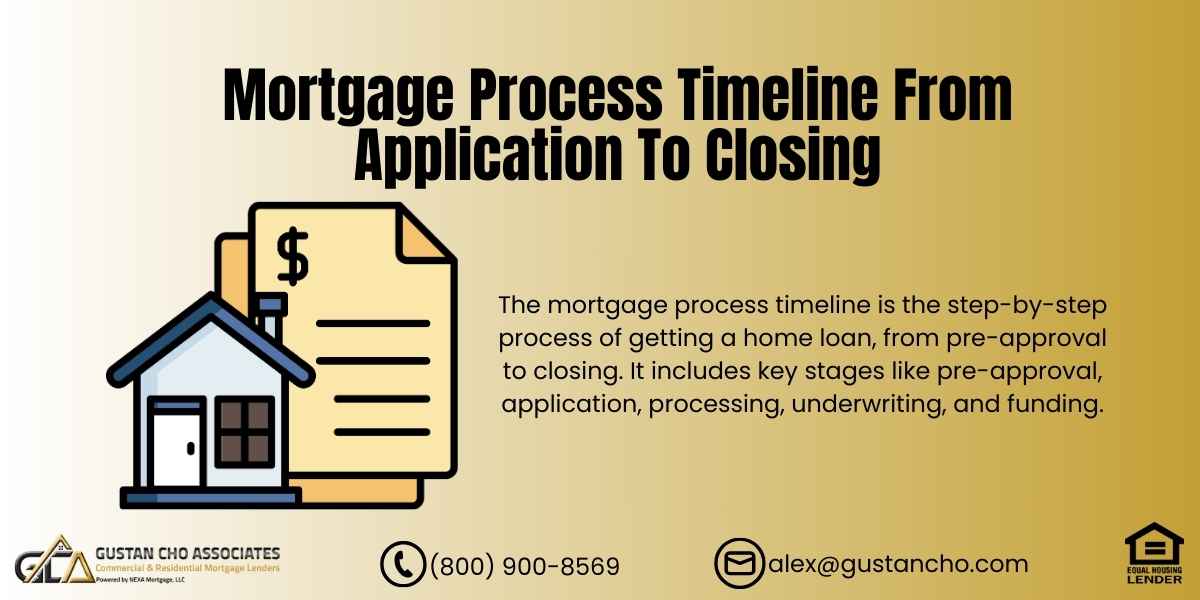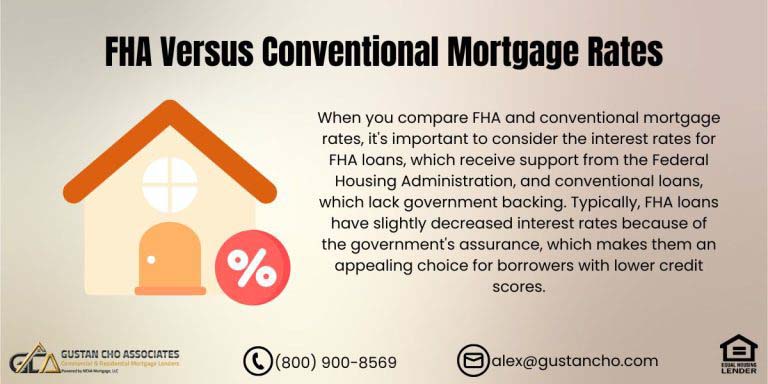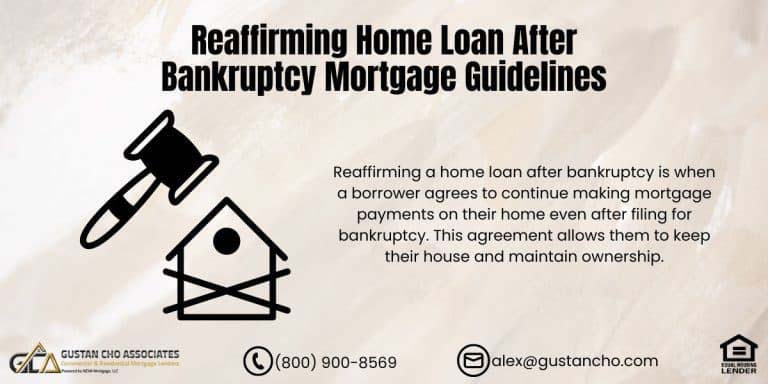Understanding the Mortgage Process Timeline: Your Step-by-Step Guide to Getting a Mortgage in 2025
Buying or refinancing your mortgage can seem like a big job. However, knowing the mortgage process timeline can make things a lot simpler. Whether you’re purchasing your dream home or considering getting a second mortgage with Gustan Cho Associates, knowing what happens at each step can help you feel less stressed and make everything go smoothly.
In this guide, we’ll walk you through the updated mortgage process timeline for 2025, including steps, documents needed, and tips for avoiding delays. By the end, you’ll have a clear roadmap to navigate your mortgage journey confidently.
Step 1: Pre-Approval — The Foundation of Your Mortgage
The first and most critical step in the mortgage process is getting pre-approved. Pre-approval shows lenders that you’re serious about buying a home and gives you an idea of how much you can borrow. It also gives you an advantage when shopping for homes because sellers take pre-approved buyers more seriously.
What Happens During Pre-Approval?
A loan officer will:
- Review your credit score and report.
- Analyze your income and employment history.
- Look at your debt-to-income (DTI) ratio.
The loan originator should interview the borrower. Make sure that they go over the borrower’s credit report. Ensure all line items on the borrower’s credit report are correct. Check for derogatory credit items, such as public records like judgments and tax liens, that are not reported on the borrower’s credit report. Public records such as judgments or tax liens not reporting on the borrower’s credit report will be revealed. Public records get discovered when lenders do a third-party national public records search, such as Core Logic or Lexis Nexis.
Connect With Our Loan officer To Start Your Process Towards Buying A Home
Apply Online And Get recommendations From Loan Experts
What Documents Will You Need?
To get pre-approved, gather the following:
- Two years of tax returns.
- Recent pay stubs that detail your earnings or, if you are self-employed, include comprehensive profit and loss statements that reflect your income and expenses.
- Bank statements from the past two months.
- W-2s or 1099 forms for the last two years.
Pro Tip: Be thorough with your documentation. Missing or incomplete information can delay your pre-approval and push back your mortgage process timeline.
Step 2: House Hunting and Making an Offer
Once pre-approved, you can start house hunting. Your pre-approval letter proves you’re ready to buy from sellers and real estate agents. When you find the right home, your real estate agent will help you submit an offer.
What Happens After Your Offer Is Accepted?
- You’ll sign a purchase agreement.
- Your lender will update your loan file to reflect the property details.
- The mortgage process officially moves to the application stage.
Pro Tip: Work closely with your loan officer during this time to ensure all paperwork is submitted promptly.
Step 3: Formal Mortgage Application
After accepting your offer, the next step is completing the formal mortgage application. At Gustan Cho Associates, this process is streamlined for efficiency, ensuring that your mortgage process timeline stays on track.
What Happens During This Stage?
- You’ll review and sign disclosures, including the Loan Estimate.
- The loan officer prepares your file for processing.
Key Documents to Submit:
In addition to the documents you provided during pre-approval, you may need to provide:
- Updated pay stubs or bank statements.
- You can provide documentation like bonuses or income from rental properties to demonstrate additional income.
Step 4: Loan Processing
Once your formal application is submitted, it moves to the processing stage. This is where the mortgage processor ensures your file is complete and ready for underwriting.
What Does a Mortgage Processor Do?
- Verifies all documents.
- Orders third-party services like the appraisal and title report.
- Ensures your file meets lender and program guidelines.
Pro Tip: Respond quickly to requests for additional documents or clarifications. Delays in submitting information can extend the timeline of your mortgage process.
Step 5: Appraisal and Title Search
At this stage, the lender initiates an appraisal to assess the home’s fair market value. This involves hiring a qualified appraiser to evaluate various factors, including the property’s location, size, condition, and comparable sales in the area. Alongside the appraisal, the lender also conducts a thorough title search. This step is important because it reveals any possible legal problems with the property, like liens, easements, or ownership disputes. The appraisal and the title search results play a vital role in the lending decision and help ensure that the investment is sound and free from any legal complications.
How Long Does This Take?
- Appraisals typically take 5-7 business days but can be expedited for an additional fee.
- Title searches usually take 3-5 business days.
Pro Tip: To avoid unnecessary delays, choose a lender like Gustan Cho Associates, which works with reliable appraisers and title companies.
Step 6: Underwriting
Underwriting is where your loan application is thoroughly reviewed to ensure it meets all lender guidelines. The underwriter evaluates your capacity to repay the loan. It verifies that the property’s value adequately supports the loan amount. This process is essential in ensuring both the lender’s investment and your financial stability.
Conditional Approval:
After the initial review, the underwriter issues a conditional approval with a list of outstanding items, such as:
- Additional documentation.
- Verification of large deposits in your bank account.
- Proof of insurance coverage for the property.
Pro Tip: Submit requested conditions as quickly as possible to keep your timeline on track.
Step 7: Clear to Close
A clear to close (CTC) signifies that your loan application has undergone all necessary evaluations and has received full approval from the lender. All conditions have been met at this stage, and any outstanding documentation required for the loan has been provided. This means that the lender is prepared to finalize the loan and is ready to proceed with the funding process. This is a crucial milestone in the mortgage process, indicating that you are close to obtaining the funds needed for your property purchase. At this stage:
- The lender prepares final loan documents.
- You carefully examine and sign the Closing Disclosure, an essential document that offers a comprehensive overview of your loan terms. This detailed breakdown outlines important components such as the interest rate, monthly payments, and various closing costs associated with your mortgage. It ensures that you fully understand your financial obligations before finalizing the transaction.
How Long Does It Take to Get a CTC?
With Gustan Cho Associates, most borrowers receive their CTC within 24-48 hours of submitting final conditions.
Pro Tip: Double-check all details on your Closing Disclosure to ensure accuracy before signing.
Step 8: Closing Day
On closing day, you will confidently sign the final documents, pay any remaining closing costs, and proudly step into your new role as the property’s owner or successfully finalize your refinance process. This is an exciting moment that marks a significant achievement!
What to Expect at Closing:
- A title company representative will oversee the signing.
- The lender wires funds to the title company.
- You’ll receive the keys to your new home (or confirmation of your refinanced terms).
Start Your Process Towards Buying A Home
Apply Online And Get recommendations From Loan Experts
Pro Tip: Bring a government-issued ID and a cashier’s check (if applicable) for any remaining payments.
2025 Updates to the Mortgage Process Timeline
The mortgage industry continues to evolve, and staying informed about recent changes can make your journey smoother:
- Faster Digital Processing: Advances in digital tools allow lenders like Gustan Cho Associates to process applications more efficiently. Many steps, such as submitting documents and signing disclosures, can now be done online.
- Updated Credit Scoring Models: New credit scoring systems in 2025 are more inclusive, potentially benefiting borrowers with limited credit histories or recent improvements in their scores.
- Higher Loan Limits: For borrowers seeking a second mortgage, increased conforming loan limits provide more flexibility when financing larger purchases or cash-out refinances.
- Streamlined Appraisal Alternatives: For certain properties, appraisal waivers or hybrid appraisals are becoming more common, significantly reducing timelines.
Common Causes of Delays and How to Avoid Them
Delays can happen, but knowing the common causes helps you stay ahead:
- Incomplete Documentation: Submit all requested documents promptly and in full.
- Low Appraisal Values: Work with a lender experienced in handling appraisal disputes, like Gustan Cho Associates.
- Borrower Inaction: Stay responsive to your loan officer and processor. Quick communication prevents bottlenecks.
Why Choose Gustan Cho Associates?
At Gustan Cho Associates, we specialize in fast, efficient mortgage approvals. Whether buying your first home or exploring a second mortgage, our team is dedicated to keeping your mortgage process timeline on track. We’re equipped to handle even the most complex cases with no overlays on government and conventional loans.
Benefits of Working with Us:
- Faster Closings: Our average clear-to-close time is under 30 days.
- Flexible Loan Options: We have a program for every borrower from FHA and VA to second mortgages.
- Expert Guidance: Our experienced loan officers guide you every step of the way.
Get Started Today
Understanding the mortgage process timeline is the first step toward achieving your homeownership goals. Ready to move forward? Contact Gustan Cho Associates today at 800-900-8569 or alex@gustancho.com to get pre-approved and start your journey to a second mortgage or refinance.
Let’s make the process simple, stress-free, and fast. Your dream home is closer than you think!
Frequently Asked Questions About Mortgage process Timeline:
Q: What is the Mortgage Process Timeline?
A: The mortgage process timeline is the step-by-step process of getting a home loan, from pre-approval to closing. It includes key stages like pre-approval, application, processing, underwriting, and funding.
Q: How Long Does the Mortgage Process Take?
A: The timeline can vary, but with Gustan Cho Associates, the process often takes about 30 days from start to finish if all documents are submitted promptly.
Q: What Documents do I Need for Pre-Approval?
A: To get pre-approved, you’ll need:
- Two years of tax returns.
- Recent pay stubs or profit-and-loss statements if self-employed.
- Two months of bank statements.
- W-2s or 1099 forms for the last two years.
Q: What Happens After Pre-Approval?
A: Once pre-approved, you can start house hunting. After making an offer and getting it accepted, you’ll move to the formal mortgage application stage.
Q: What Causes Delays in the Mortgage Process Timeline?
A: Delays often happen because of- Incomplete or missing documents.
- Low appraisal values.
- Slow responses from borrowers or third parties.
Q: How Long Does Underwriting Take?
A: With Gustan Cho Associates, underwriting typically takes 24-48 hours after submitting your file. If conditions are needed, the timeline may be extended slightly.
Q: What is Clear-to-Close (CTC)?
A: A clear-to-close means your loan is fully approved, all conditions are met, and the lender is ready to finalize and fund it.
Q: Can I Speed up the Mortgage Process Timeline?
A: Yes! Respond to your lender’s requests quickly, submit complete documents, and work with a lender like Gustan Cho Associates, which uses digital tools to streamline the process.
Q: What’s the Role of the Appraisal and Title Search?
A: The appraisal assesses the worth of your home, and the title search confirms that there are no legal complications with the property. Both of these steps play a vital role in the mortgage process timeline, ensuring everything runs smoothly.
Q: Why Should I Choose Gustan Cho Associates?
A: Gustan Cho Associates specializes in fast, efficient mortgage approvals with no overlays on government and conventional loans. They offer flexible options, expert guidance, and a clear-to-close time of under 30 days for most borrowers.
This blog about “Mortgage Process Timeline From Application To Closing” was updated on January 14th, 2025.










